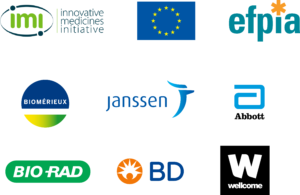
The development of a clinical algorithm for diagnosing Community-Acquired Acute Respiratory Tract Infections (CA-ARTIs) in WP1 of VALUE-Dx is a critical advancement aimed at improving the accuracy and efficiency of diagnostic processes. The WP1 team systematically reviewed the effectiveness of point-of-care tests (POCTs) and leveraged their performance to create an algorithm to drive a diagnostic process. This algorithm integrates clinical signs and symptoms, biomarkers, imaging, rapid diagnostic tests, and nucleic acid amplification technology (NAAT). Two comprehensive reviews and meta-analyses were published in 2021 and 2022 and laid the groundwork for creating an optimal diagnostic decision structure.
Methodology
The clinical algorithm was built as a binary decision tree, where each node represents a single POCT and edges the POCTs’ results. The diagnostic pathways consider different clinical guidelines and POCT performance to predict bacterial or viral causes of respiratory infections. The algorithm was rigorously tested using patient-level data to identify the best-performing algorithms, thus offering a scalable and flexible approach that can be applied across varying clinical settings.
Results
The clinical algorithms use as many as 20 signs and symptoms, two biomarkers, two imagining techniques, eight Rapid Antigen or Antibody detection techniques, and 19 Nucleic-Acid-Amplification-based tests. The heuristic algorithms run to find the best clinical algorithms differed with the selection of the available POCTs to simulate different settings. The best-resulting algorithms had 87% accuracy (AUC) for the detection of bacterial aetiology and 66% for viral aetiology.
Reviewing existing clinical algorithms
A systematic review of 33 studies (1986-2021) revealed that existing clinical algorithms often lack comprehensive validation and are typically focused on a single condition, e.g., pneumonia, or aetiology, e.g., influenza. There is no consensus on the optimal features for diagnosis, with some algorithms relying on symptoms such as fever, cough, and gastrointestinal issues, while others incorporate biomarkers like C-reactive protein (CRP) or white blood cell counts. They almost exclusively utilise logistic regression analysis on the given closed clinical observational dataset. In contrast, the new approach developed by VALUE-Dx separates the derivation of the clinical algorithm from the clinical data, allowing for flexibility in adjusting the clinical algorithms to the novel pathogens, specific POCTs costs, local prevalence, settings, and populations.
Simulations and cost profiles
To evaluate the clinical algorithms, several simulations were conducted, exploring different combinations of POCTs and their costs. For instance, in Spain, a typical diagnostic pathway might begin with assessing symptoms, followed by biomarkers, imaging, and finally advanced tests like NAATs. The simulations highlighted that while the cost of diagnostic pathways varies widely (ranging from €0 to €500), there is no clear link between higher cost and better diagnostic performance. A subset of algorithms demonstrated high performance at relatively low costs, emphasizing the importance of optimizing the cost-performance ratio.
Meta-analysis automation
One of the challenges in maintaining an up-to-date clinical algorithm is the time-consuming nature of meta-analyses. To address this, the VALUE-Dx team developed an automated pipeline using Natural Language Processing (NLP) and Large Language Models (LLMs) to streamline the inclusion and extraction processes from scientific publications. This automated system significantly reduced manual work and ensured the clinical algorithm will remain adaptable to evolving diagnostic technologies.
Conclusion
The VALUE-Dx project introduced a novel approach to developing clinical algorithms for diagnosing CA-ARTIs. By integrating diverse POCTs, leveraging patient data, and automating the meta-analysis process, the project created a dynamic, performance-driven algorithm adaptable to different clinical settings. As POCTs continue to evolve, this algorithm offers a flexible framework for improving diagnostic accuracy, reducing unnecessary tests, and optimizing healthcare costs. Discussion is ongoing with relevant stakeholders and scientific Societies to support the sustainability of the clinical algorithms.
For interactive visualization of the clinical algorithm and meta-analysis results, visit https://ca-valuedx.ddsp.univr.it.


